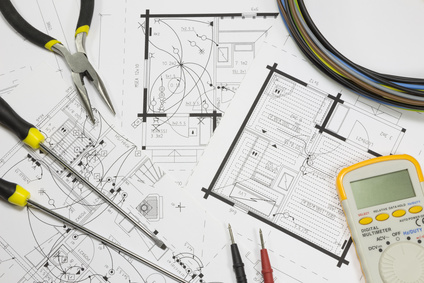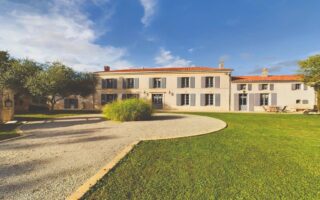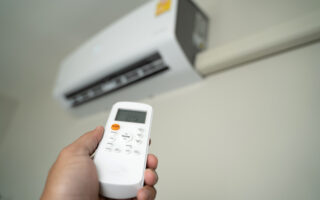French Electrical Systems


Electricity Supply
The standard domestic electricity supply in France is single phase 230 volts, 50Hz. It is also common to find a 3–phase 380v distributed supply in larger properties.
The electricity supply authority EDF (Electricite de France) will provide a meter, fuses and a main current operated circuit breaker (disjoncteur différentiel). They are the property of EDF and are security sealed to avoid tampering, for which there is a fine.
The consumer connection can only be to the outgoing terminals of the disjoucteur différentiel which is not sealed and available to the consumer.
The EDF (disjoncteur différentiel) is rated to suit your tariff and has a sensitivity of 500ma or in some cases 650ma. This sensitivity level is not suitable for the protection of people and a second device with a sensitivity of 30 ma must be installed in the consumer unit to provide earth fault protection.
The function of the EDF device is to protect you from faults that might occur both inside and external to your property and ensure you do not use more current than your selected electricity tariff allows. It will be calibrated in amps corresponding to your tariff and should you constantly exceed this value it will trip the electrical supply.
If you experience this device tripping when you use several electrical appliances at the same time you may need to have the device rating increased which can only be done by EDF and there may be a charge for the service.
A property with a single phase supply less than 30amps (6KW) will almost certainly need upgrading to cope with the loading of modern appliances. A single phase 45 amps (9KW) supply is adequate for a 2-3 bedroom house unless you have an electric cooker or electric central heating then it should be 60amps (12KW), the maximum supply available to you is 90amps (18KW).
An upgrade will incur higher standing charges which may not be the best solution if your property is just for holiday use. Alternatively, devices are available (delesteurs) which prioritise your power consumption for the most economical use. Professional advice should be sought about their application and installation.
Unlike the UK authorities, EDF do not provide an earth connection. This is the responsibility of the consumer and must be installed. It should be adequate for the size of the supply to the property and protection of any occupants.
3 – phase supplies and installations require some expertise and in general are only useful where you need to operate electrical machines. They are more expensive to install and maintain than the equivalent single phase solution.
Supplies in France are not regulated as they are in the UK, this means they can fluctuate up and down which can cause computers or other microprocessor based equipment to fail. It is advisable to fit voltage stabilisers and surge suppressors to sensitive equipment. Voltage drop is common, particularly in the countryside and if severe you should consult EDF to avoid problems with electrical appliances.
Wiring Methods
The wiring method applied depends upon the material being used and the person doing the wiring. The typical older French country properties employ a system whereby both power and lighting circuits are combined with a continuous pair of cables which run to every outlet, terminating into endless boxes hidden in obscure places with no earth conductor at all.
Whilst it might work, it is NOT good practice, NOT safe and NOT compliant with the latest regulations. (norms)
Cables in France are either sheathed or single cores, both need to be installed in conduits or trunking to provide protection and for good appearance. Surface mounted sheathed cables are permitted but must be secured. Any hidden cables under plaster should be run vertically not horizontally or diagonally wherever practical to do so.
Wiring material in France lends itself to the multi-junction boxes approach, but careful selection of good quality sockets, switches and back boxes will minimise the junction boxes used. All junction boxes should always be accessible for future maintenance and be adjacent to the equipment they serve.
Fused plug tops are not common in France which means whatever is connected into a power outlet, is protected at the consumer unit only, unless there is a sub fuse within the appliance or power outlet. (i.e. your computer or TV may well be connected to a 20amp fuse or circuit breaker)
Power and lighting circuits are limited to the number of outlets on each circuit, which is determined by the cable size and protection device being used. Multi-point light switches utilise a relay system (telerupteur) but conventional 2-way and intermediate switches are available as an alternative.
Separate circuits are used for larger power items such as water heaters, cookers, washing machines, freezers and larger kitchen appliances.
French manufactured cables have an insulated earth conductor which is the same size as the live and neutral conductors, also a specific colour code exists for wiring systems which relates to the function of each wire in the installation.
Usually the LIVE conductor is Black, however others colours are used except Blue which is always NEUTRAL and Green / Yellow stripped which is always EARTH .Red is becoming the standard for the Live conductor in a new installation.
Strict regulations apply to bathrooms and areas where water may be present; these should be adhered to at all times for your own safety. It is normal to find power points in bathrooms but the positioning is important to avoid contact with water.
There is a minimum requirement of the number of sockets, lights, cookers etc in any installation. In addition, cabling for telephones, TV’s and computers is expected to be provided in all new installations in line with set standards as dictated by the electrical regulations. (norms)
Consumer units (fuses / breakers)
Older French properties may have a fuse box on each floor depending on how many floors there are in the property. The modern approach is for one fuse box located convenient to the daily living area of a property with the rating of fuses or breakers clearly marked in amps.
The choice of using fuses or circuit breakers is entirely yours, there are technical benefits in choosing circuit breakers but they are more expensive. Both fuses and breakers in French systems are double pole, this means both live and neutral are isolated in the event of a trip, ratings are the same for both – typically 2, 6, 10, 16, 20 and 32 amps and both are connected into distribution boards in exactly the same way.
A residual current device (RCD) of 30ma sensitivity must be fitted into the distribution system. An RCD is designed to protect you from the risk of electric shock in the event of an earth fault. These devices can sometimes trip during lightning storms because of their sensitivity and should also be periodically tested by using the test button on the front of the device to ensure it trips. There are two types of RCD and different current ratings to suit the power requirements of the installation.
Distribution fuse boards (consumer unit) in France are very flexible and can be configured to suit your installation, you can also buy them ready assembled with a standard set of fuses or circuit breakers for a typical domestic installation at most DIY stores. There are some specific regulations for distribution consumer units which must be adhered to in new installations.
[mrb]
Earthing / bonding principles
The earth conductor is always the principle conductor and most important in any installation and is always green or green / yellow stripped in colour.
Depending upon where you live in France the connection to the general earth mass can be the responsibility of the consumer and not the electricity supply authority EDF. The connection may need to be quite deep to ensure good conductivity and numerous methods are used.
The main earth connection should be a bare copper stranded cable no less than 25mm attached to a rod or plate depending on the method used, this is then terminated into a purpose made terminal designed so as to be disconnected for test purposes. From here the cable size can reduce to the same size as the main feeder cable (16mm or 10mm typically) and should be insulated green / yellow which then connects directly to the main electrical distribution fuse box.
The earth conductor should be continuous throughout the installation and terminated at every lighting and power outlet point. It should be adequate to ensure an effective earth resistance of no more than 100 ohms maximum.
All gas and water pipes should be earthed using 2.5mm, 4mm or preferably 6mm insulated cable together with any exposed metal surfaces or equipment, especially in areas like kitchens and bathrooms. This creates a bonded connection of equal potential to all metal surfaces avoiding the risk of electric shock. Specially designed clamps for connecting to pipes are available from professional electrical suppliers together with earth rods, plates and test terminals.
Electric heating & water heating
There are several things to consider before selecting your heating equipment – the construction of your property for instance, is it old or modern? Stone or brick? Will it be used just for holidays or is it a permanent residence?
You should always seek professional advice before choosing the system. Under floor electric heating is common in France as it’s well suited to tiled floors and can be controlled automatically with thermostats or timers, making it very convenient. Convection and storage radiators are also commonplace with some automatic controls and special tariffs available from EDF to provide effective operation and economical costs.
Electric water heating is both effective and convenient especially during the hot summer months, numerous sizes of tanks are available which are fully insulated, they are designed with low power elements, which heat up slowly typically 4 – 6 hours depending upon the size and once hot require little energy to maintain their temperature.
Indirect cylinders with electric elements for use with central heating boilers are available which switch to electric in the summer when the central heating is not used. Green energy solutions are popular such as solar, geo thermal, wood boilers and burners, in addition grants may be available for such installations depending upon your circumstances.
If you have a 3-phase supply you will need to balance the heating load, so ensure the heating equipment is suitable for your supply and more importantly the supply is adequate for the heating load you are considering. This is a job for a competent electrician only to avoid tripping problems at critical heating periods.
Installation regulations (normes)
Regulations are not just about the number of points or lights you can install on any single circuit. They are in place for safety reasons and an understanding of electrical principles is needed to fully understand their application.
Most DIY books will advise the basics but as regulations change periodically only electrical professionals will be fully conversant with the latest updates. Whilst it would be simple to list a series of current regulations for reference, they will be superseded at some stage. Professional advice should be sought as to the latest situation before commencing any installation work.
From 1 April 2009, it is a legal requirement to have an electrical inspection when selling a property which is more than 15 years old. This can only be done by a qualified, registered electrical contractor.
The above information is intended to explain domestic electrical systems in France, it is not a DIY guide. Electrical installations should only be carried out by qualified, registered electrical contractors for your own safety.
•With thanks to David Broadhurst of DB Technical
For information about setting up your electricity supply read Electricity in France.
Share to: Facebook Twitter LinkedIn Email
More in countryside, guides, heating, legal, summer, technology, work
By FrenchEntrée
Leave a reply
Your email address will not be published. Required fields are marked *




REPLY
REPLY
REPLY
REPLY
REPLY